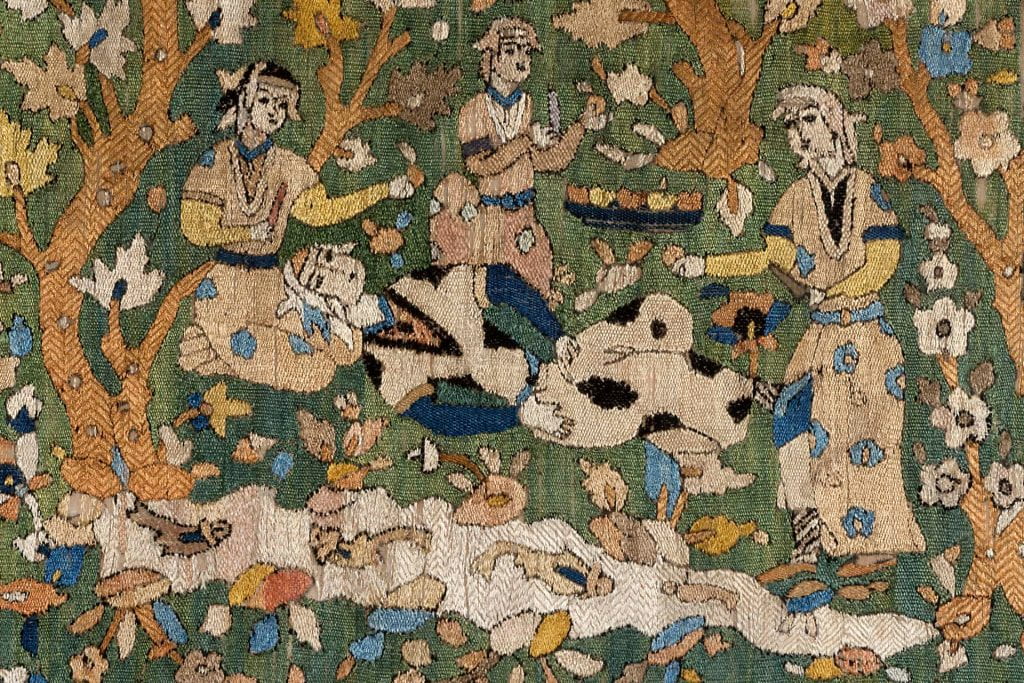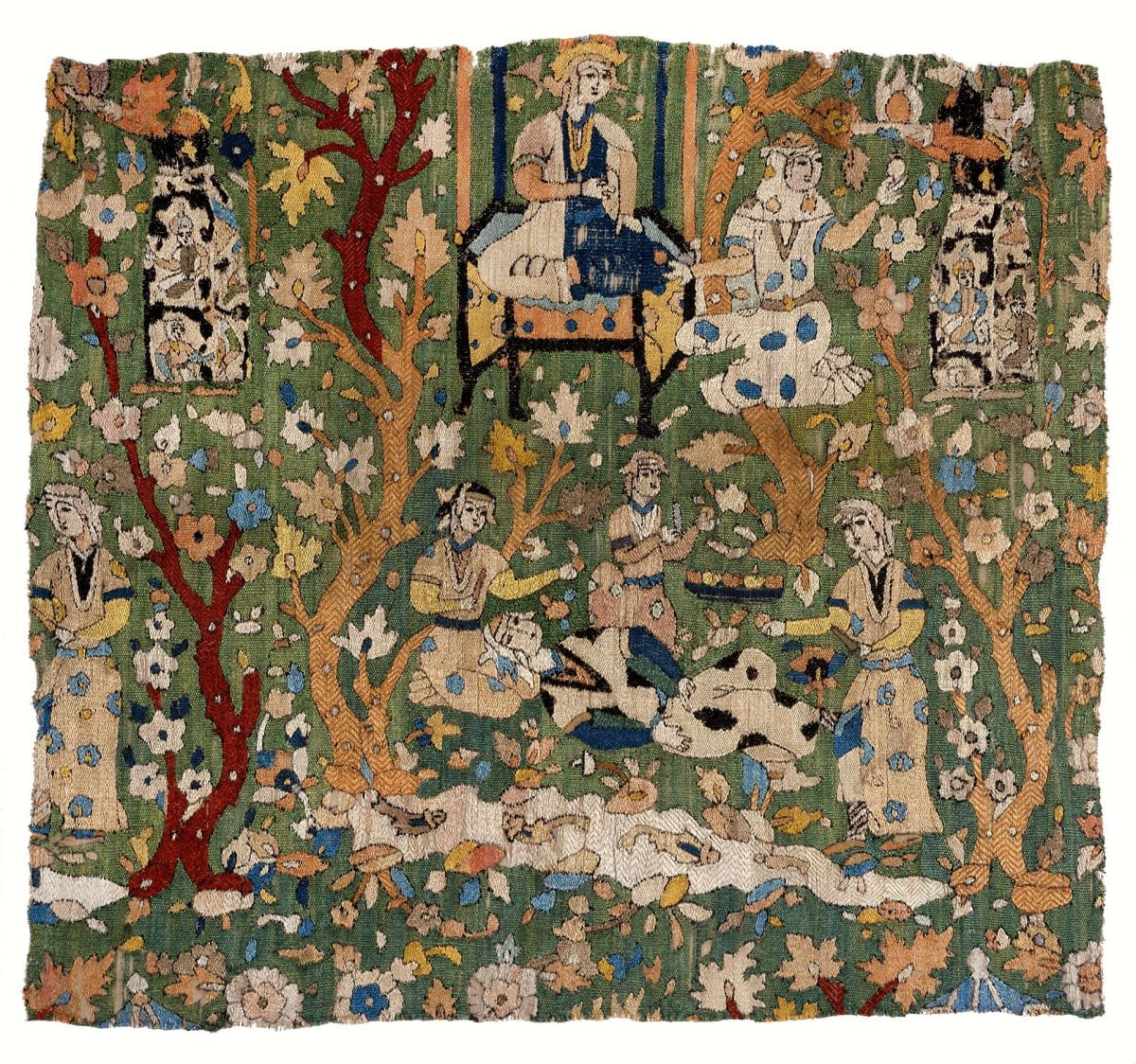For centuries, the biblical tale of Potiphar’s wife and her attempted seduction of Joseph has been told across cultures and religions in poetry, painting and fabric. During Iran’s Safavid dynasty (1501-1736), the story of Yusuf and Zulaikha, as they are known in the Quran, was a popular subject in classical Persian literature and miniature paintings.
This charming, colorful embroidery from 16th- or 17th-century Iran is a rare textile representation of the famous story. While Western art has tended to focus on the erotic moment when Joseph rejects the advances of Potiphar’s wife (below), here we see a more demure allusion to this scene of frustrated passion.

The upper half of this fragment portrays the beautiful Zulaikha seated in a pavilion in her garden as Yusuf approaches from the right with a pitcher on a tray. His overcoat displays figures with baton turbans typical of the Safavid era. Zulaikha and Yusuf are surrounded by luxuriant, twisting foliage and flowers scattered across the garden — a favorite setting for many Persian illustrations and poems.

In the lower half, Zulaikha’s companions are seated by a narrow pool filled with fish, holding knives to peel oranges. In this narrative, all delight at the sight of Yusuf, who is so handsome that one of them swoons by the side of the pool, cutting her hand as she falls.

The soft green of the plain-weave cotton provides a warm background to the vivid overlaid silk embroidery with imagery most likely borrowed from an earlier Safavid textile or illuminated manuscript. This luxury textile surely adorned a wealthy home and was prized by an owner fond of one of the favorite love stories in Persian literature.
